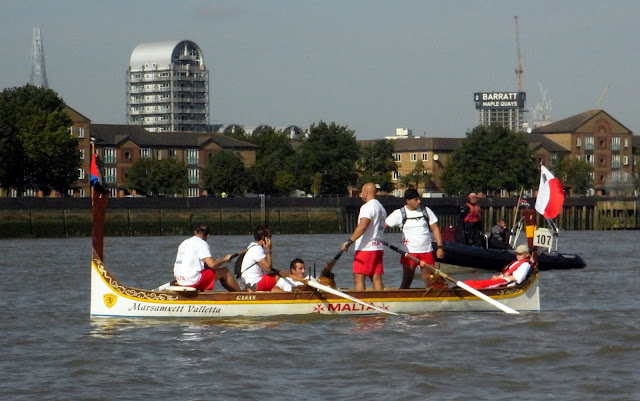Clayton skiffs are not much admired in rowing circles, it has to be admitted. They are beamy, heavy and hard work to row. And they are not very pretty. Even one of their biggest fans said to me that all they needed was a couple of taps at the end...
But they have lots of big advantages. They are roomy and the rowing positions are very comfortable. They are very seaworthy and inspire total confidence even in nervous novice crews. And they are strong, secure and practically bullet-proof.
Four Claytons appeared at the recent Manningtree Paddle and Oar Festival. Pictured above are Mabel, Lt Washington and Myrto. Witchoar romped home first - this picture shows us trying to catch her on the homeward leg.
There is a cup for Claytons at the Great River Race, and five entered last year (
I don't need to mention who won).
There are a couple of dozen Claytons around the Thames Estuary and the south coast, but the clubs don't communicate very well. So I have set up a
Facebook page for Clayton Skiffies - if you row a Clayton, please 'like' the page and contribute to it. If everyone who uses these remarkable boats gets on the page we might get a scene going!
It is even possible that a new Clayton will be built over the winter. Perhaps these under-rated boats might be in for a resurgence.....






























